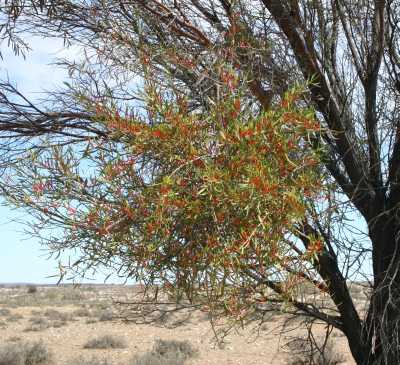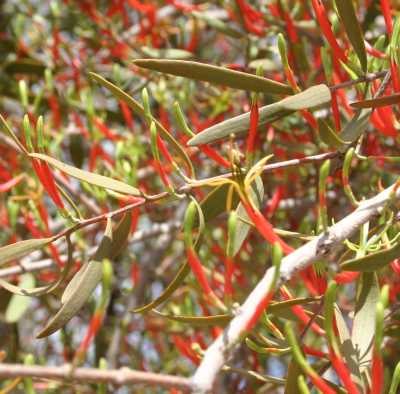


 |
 |
|
|||||
 |
|||||||
| |
|
|
|
|
|
||
|
|
|
|
|
|
|
|
|
|
Lysiana exocarpi
harlequin mistletoe You'll often notice mistletoes attached to trees at Fowlers Gap. These can be confusing at first: "I didn't know mulgas had such pretty flowers!". There are numerous parasitic plants occurring around Fowlers Gap, but the harlequin mistletoe is probably the most recognisable. Host species include members of the Acacia, Casuarina, Eremophila, Eucalyptus, Exocarpos, Myoporum, Santalum and Senna. Often a particular mistletoe is adapted to resemble its host. This example comes from Mount Brown near Milparinka, but they also commonly occur at Fowlers Gap. The mulga shown is heavily parasitised (the healthy green-looking bunches) and looks very sick, Eventually the mistletoe will overwhelm the tree and kill it. Mistletoes are important habitat for small bird species. They are spread by birds (particularly the "mistletoe bird") which wipe their bottoms on new hosts to rid themselves of the sticky seeds. The seeds rapidly germinate and attach themselves to the host's sapwood. You can probably guess that they are fascinating! Bark: hairless drooping branches attached to a
host plant. |
  
|